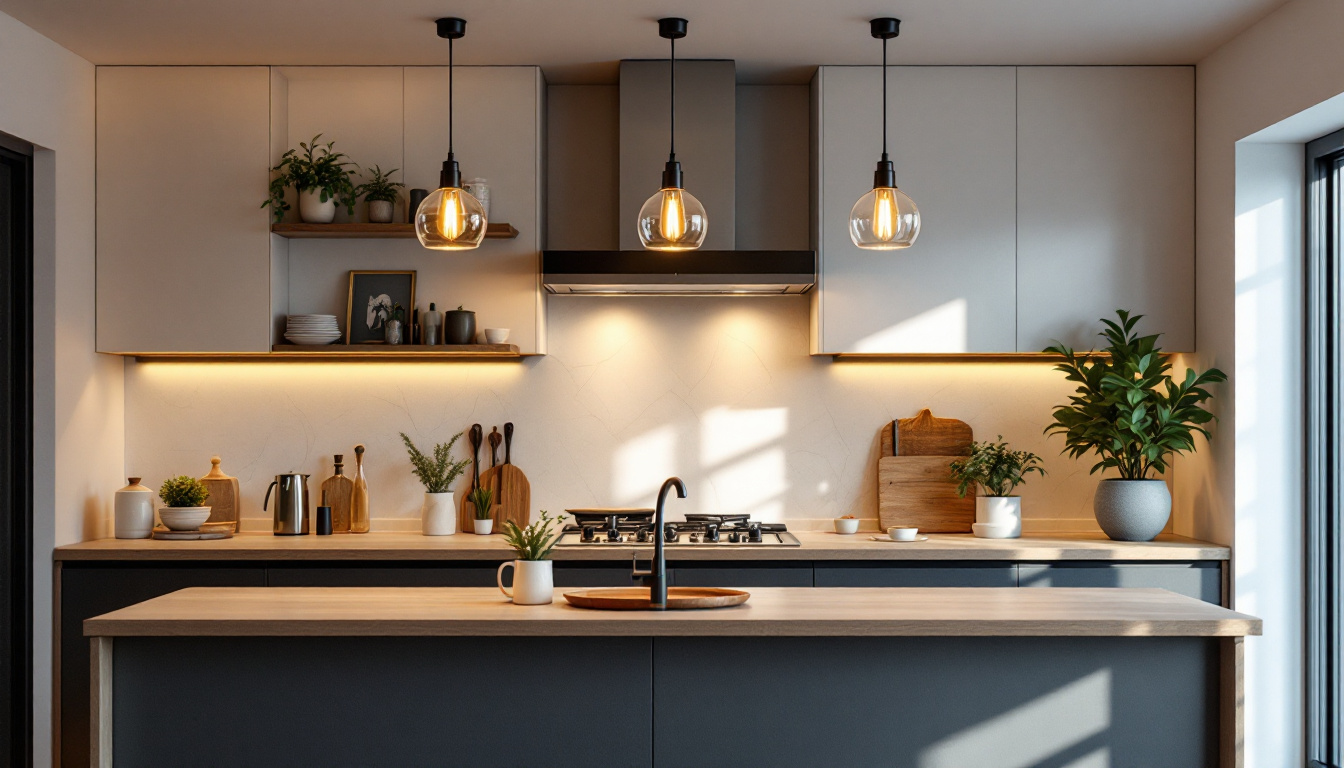
In recent years, the lighting industry has witnessed a significant shift from traditional fluorescent tube fixtures to energy-efficient LED alternatives. This transition is not just a trend; it represents a fundamental change in how lighting is perceived and utilized in various settings. For lighting contractors, understanding the implications of this shift is crucial for making informed decisions that benefit both their clients and their businesses.
As the demand for sustainable and cost-effective lighting solutions grows, contractors are often faced with the question: Is it worth replacing fluorescent tube fixtures with LED lighting? This article delves into the pros and cons of such a transition, providing valuable insights for lighting professionals navigating this evolving landscape.
One of the most compelling advantages of LED lighting is its energy efficiency. LEDs consume up to 75% less energy than traditional incandescent bulbs and can last up to 25 times longer. This longevity not only reduces the frequency of replacements but also significantly lowers maintenance costs, making it an attractive option for both residential and commercial applications. Furthermore, the reduced energy consumption translates to lower electricity bills, which can be a decisive factor for businesses looking to cut operational costs. As energy prices continue to fluctuate, the financial benefits of switching to LED lighting become increasingly apparent.
Additionally, the versatility of LED technology allows for a wide range of applications, from accent lighting in homes to large-scale installations in warehouses and retail spaces. With advancements in dimming capabilities and color temperature options, LEDs can create tailored lighting solutions that enhance aesthetics and functionality. This adaptability not only meets the diverse needs of clients but also opens up new avenues for contractors to showcase their expertise in designing innovative lighting systems. As the market continues to evolve, staying abreast of these developments will empower contractors to offer cutting-edge solutions that resonate with the growing demand for modern, efficient lighting.
One of the most compelling reasons to replace fluorescent tubes with LED fixtures is energy efficiency. LEDs consume significantly less power compared to their fluorescent counterparts, often using up to 75% less energy. This reduction in energy consumption translates to lower electricity bills for clients, making LED lighting an attractive option for both residential and commercial applications.
Moreover, the long lifespan of LED fixtures—often exceeding 25,000 hours—means that replacements are less frequent. This longevity not only reduces maintenance costs but also minimizes the environmental impact associated with manufacturing and disposing of lighting products. In fact, the extended life of LEDs can lead to a substantial decrease in waste, as fewer bulbs need to be produced and discarded over time. This aspect is particularly appealing to businesses aiming to enhance their sustainability practices and reduce their carbon footprint.
LED lighting offers superior light quality compared to fluorescent tubes. With a higher Color Rendering Index (CRI), LEDs provide more accurate color representation, which is particularly important in settings such as retail, art galleries, and photography studios. Clients appreciate the vibrant and consistent lighting that LEDs deliver, enhancing the overall ambiance of their spaces. The ability of LEDs to produce a broad spectrum of colors allows for creative lighting designs that can transform ordinary environments into visually stunning experiences.
Additionally, LED technology allows for better control over light distribution and intensity. Dimming capabilities and adjustable color temperatures provide flexibility that fluorescent fixtures simply cannot match, making LEDs suitable for a wider range of applications. This adaptability is especially beneficial in environments where lighting needs may change throughout the day, such as in offices that require bright light during work hours but softer illumination for after-hours events. The versatility of LEDs ensures that spaces can be tailored to meet the specific needs of their occupants at any given time.
As sustainability becomes a priority for many businesses, the environmental benefits of LED lighting cannot be overlooked. Unlike fluorescent tubes, which contain hazardous materials like mercury, LEDs are free from such toxic substances. This makes them a safer choice for both installation and disposal. The absence of harmful chemicals not only protects the health of those who handle the lights but also reduces the risk of environmental contamination during disposal, further aligning with eco-friendly practices.
Furthermore, the energy savings associated with LED lighting contribute to a reduction in greenhouse gas emissions. By promoting LED installations, lighting contractors can play a vital role in helping clients achieve their sustainability goals while also enhancing their own reputation in the marketplace. As more organizations commit to reducing their environmental impact, the transition to LED lighting becomes a key component of broader green initiatives. The cumulative effect of widespread LED adoption can lead to significant reductions in energy consumption on a global scale, showcasing the power of collective action in addressing climate change.
While the long-term savings of LED lighting are significant, the initial investment can be a barrier for some clients. LED fixtures tend to have a higher upfront cost compared to fluorescent tubes, which may deter budget-conscious customers. Lighting contractors must be prepared to explain the long-term financial benefits and return on investment (ROI) associated with LED technology.
To address this challenge, contractors can offer financing options or highlight available rebates and incentives that may offset the initial costs. Educating clients about the potential savings over time can help alleviate concerns about the upfront expense.
Transitioning from fluorescent to LED lighting may also present compatibility issues, particularly in existing fixtures. Not all fluorescent fixtures are designed to accommodate LED tubes, and retrofitting may be necessary. This process can add complexity and labor costs to a project, which contractors need to consider when estimating budgets and timelines.
Contractors should conduct thorough assessments of existing lighting systems to determine compatibility and identify any necessary modifications. Staying informed about the latest LED technologies and retrofitting options can streamline this process and enhance client satisfaction.
Another challenge lighting contractors may face is client education. Many clients have grown accustomed to fluorescent lighting and may be hesitant to embrace LED technology. Misconceptions about LED performance, color temperature, and brightness can lead to resistance against making the switch.
For lighting contractors, conducting a cost-benefit analysis is essential when advising clients on whether to replace fluorescent fixtures with LEDs. This analysis should consider not only the initial costs but also the long-term savings associated with energy efficiency and reduced maintenance. By presenting a clear financial picture, contractors can help clients understand the value of investing in LED technology.
Additionally, contractors should factor in potential incentives and rebates that may be available for LED installations. Many utility companies and government programs offer financial incentives to encourage the adoption of energy-efficient lighting solutions, further enhancing the appeal of LED technology.
Transitioning to LED lighting can also impact a contractor’s business operations. As demand for LED installations increases, contractors may need to invest in training and education for their teams to ensure they are knowledgeable about the latest technologies and installation techniques. This investment in workforce development can pay off in the long run, as clients increasingly seek out contractors with expertise in energy-efficient lighting solutions.
Moreover, adopting LED technology can enhance a contractor’s reputation as a forward-thinking and environmentally conscious business. This can lead to increased referrals and a competitive edge in the marketplace.
Before embarking on an LED installation project, conducting a thorough site assessment is crucial. This involves evaluating the existing lighting system, understanding the client’s needs, and identifying any potential challenges. By taking the time to assess the space, contractors can develop tailored solutions that maximize the benefits of LED lighting.
During the assessment, contractors should consider factors such as the size of the space, existing fixture types, and the intended use of the area. This information will inform decisions about fixture selection, placement, and any necessary retrofitting.
The market for LED lighting products is vast and varied, making it essential for contractors to choose the right fixtures for each project. Factors to consider include brightness, color temperature, and beam angle. Selecting high-quality products from reputable manufacturers can ensure reliability and performance, which is critical for client satisfaction.
Contractors should also stay informed about the latest advancements in LED technology, as new products and innovations are continually emerging. This knowledge will enable them to offer clients the best possible solutions tailored to their specific needs.
Once an LED installation is complete, providing ongoing support is vital for maintaining client relationships. This can include offering maintenance services, troubleshooting assistance, and guidance on optimizing energy efficiency. By being proactive in addressing any issues that arise, contractors can foster trust and encourage repeat business.
Additionally, contractors should consider implementing a follow-up program to check in with clients after the installation. This not only demonstrates commitment to customer service but also provides an opportunity to gather feedback and improve future projects.
The transition from fluorescent tube fixtures to LED lighting presents both opportunities and challenges for lighting contractors. By understanding the pros and cons of this shift, contractors can make informed decisions that benefit their clients and their businesses. The advantages of energy efficiency, improved light quality, and reduced environmental impact make LED lighting an appealing choice for many applications.
However, it is essential to address the challenges associated with initial costs, compatibility issues, and client education. By conducting thorough assessments, choosing the right products, and providing ongoing support, contractors can navigate these challenges effectively.
As the lighting industry continues to evolve, embracing LED technology will be crucial for contractors looking to stay competitive and meet the growing demand for sustainable lighting solutions. The future of lighting is bright, and those who adapt to these changes will undoubtedly thrive in the years to come.
Ready to lead the charge in the LED revolution and elevate your lighting projects? At LumenWholesale, we provide lighting contractors with the highest quality, spec-grade LED products at prices that simply can’t be beaten. Say goodbye to the middleman and hello to our extensive selection that meets rigorous industry standards, ensuring every installation shines with reliability and performance. Plus, with free shipping on bulk orders, you can stock up on premium lighting solutions without worrying about hidden fees. Don’t compromise on quality or value—choose LumenWholesale for the perfect blend of affordability and convenience. Wholesale Lighting at the Best Value is just a click away.

Discover the essential tips and insights for lighting contractors in selecting the perfect electric products.

Discover how kitchen modern pendant lights can transform your space with style and efficiency.

Discover how the fan-in sale strategy can revolutionize your lighting projects by boosting efficiency and reducing costs.

Discover the pitfalls of purchasing outdoor house lights in bulk from local distributors.